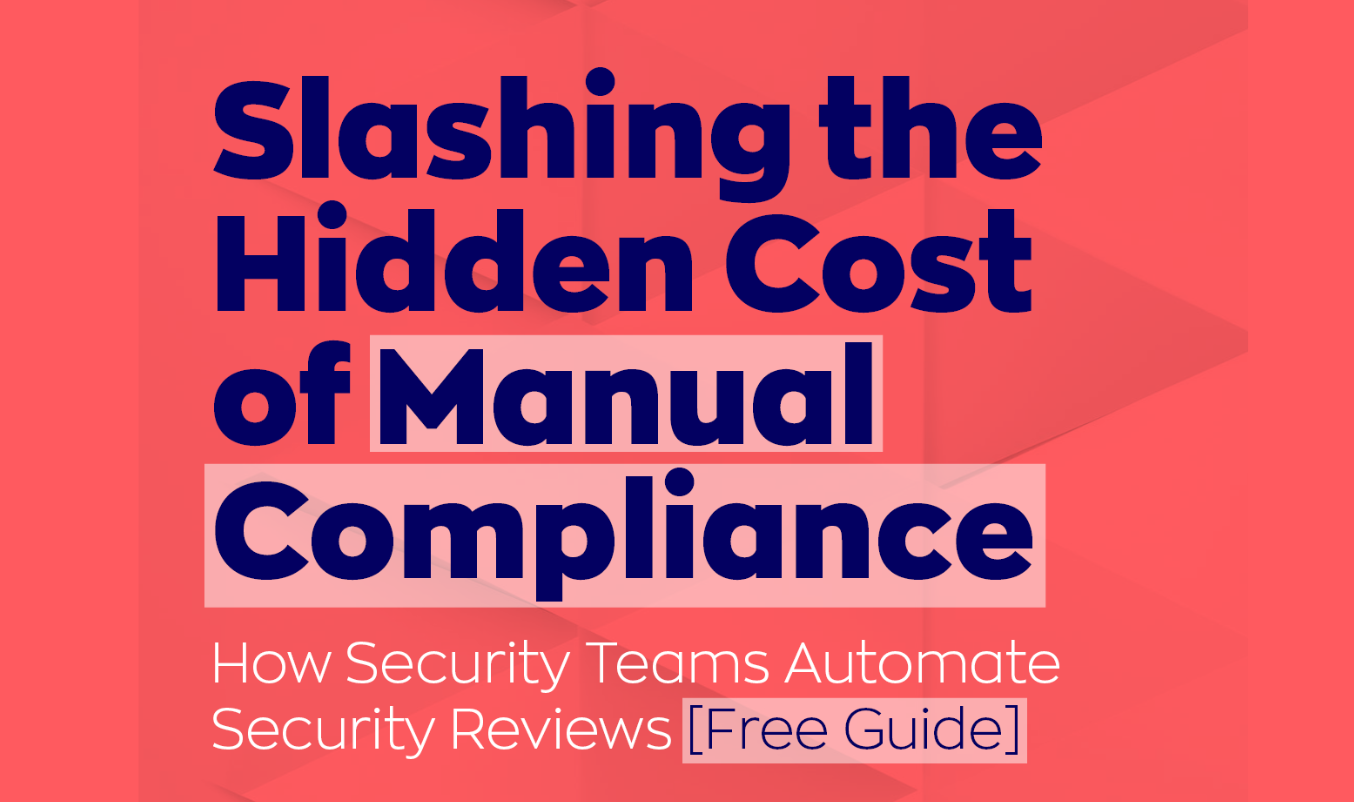How Effective Cyber Security Risk Management Can Protect Your Business

In a world where technology drives business growth, cyber risk management is essential for the protection and sustainability of businesses. It is a fundamental process for companies heavily dependent on digital technologies seeking to mitigate many potential cyber threats and vulnerabilities.
Cybersecurity risk management goes beyond addressing financial and legal risks; it’s a comprehensive approach to guarding against many strategic and security-related threats that can critically affect an organization's operations and revenue. The objective is to identify and secure digital assets precisely, assess existing security infrastructure, and fortify defenses, ensuring continual organizational resilience against evolving cyber threats.
This article will provide insight into the essentials of cyber risk management, its evolving nature, the spectrum of cyber threats, and the innovative solutions setting new benchmarks in cybersecurity.
What is Cyber Risk Management All About?
Cyber risk management is a strategic blueprint for today's digital businesses. As companies embrace digital solutions more than ever, robust protective measures against cyberattacks and potential vulnerabilities become paramount.
Why is it so important? Because in the intertwined world of technology and business, each digital advantage can inadvertently introduce threats, ranging from sophisticated cyberattacks to unintentional data breaches. Thankfully, these challenges are navigable. Through effective cyber risk management, businesses can safeguard their assets, ensuring seamless operations and compliance.
Respected bodies like the National Institute of Standards and Technology (NIST) underscore the value of continuously revisiting and refining these strategies, emphasizing that proactive adaptation equates to optimal protection in cybersecurity.
The Anatomy of Cyber Security Risk Management: A Four-Stage Process
Navigating the complexities of cyber security risk management requires a meticulously structured approach. The process can be distilled into a four-stage journey:
Stage 1: Risk Identification
This foundational step involves understanding the full spectrum of potential threats and vulnerabilities. Companies use tools like cybersecurity risk assessments and data from security information and event management (SIEM) systems. This phase focuses on direct threats and considers indirect vulnerabilities, such as those from partners or vendors, ensuring a holistic view of risks.
Stage2: Risk Assessment
Once the risks are mapped out, they're subjected to a deeper analysis. Factors such as the likelihood of a threat, its potential impact, and any system vulnerabilities that could be exploited are explored. By integrating insights from both internal and external sources, organizations can build a comprehensive perspective of their threat landscape.
Stage 3: Risk Mitigation
With a clear understanding of the risks, it’s time to strategize. This phase is all about action, devising ways to reduce the identified threats. Solutions might include advanced security software, employee training programs, and implementing stricter access controls, among others.
Stage 4: Risk Monitoring and Review
The cyber landscape is dynamic. New threats emerge while old ones evolve. This means organizations must adopt an iterative approach, regularly revisiting their strategies and making necessary adjustments to ensure their defenses remain solid and relevant.
By breaking down the process into these structured stages, organizations can ensure they’re well-protected and agile enough to adapt to the ever-changing world of cyber threats.
What are the Main Cyber Threats?
To navigate the digital world securely, businesses must first familiarize themselves with the significant threats that exist in cyberspace. Here’s a detailed breakdown of the primary challenges they may encounter:
Phishing Attacks
Arguably one of the most prevalent forms of cyber threats. At its core, phishing is a deceptive tactic. Attackers craft emails or messages that resemble legitimate communication from banks, service providers, or colleagues. The intent? To trick recipients into clicking on malicious links or directly sharing sensitive data, like login credentials or credit card information.
Ransomware
Think of ransomware as a digital hostage situation. Malicious software encrypts a user's data, making it inaccessible. The attacker then demands payment for the data's decryption key, often in cryptocurrencies. It's not just the immediate cost of the ransom; the downtime and damage to a business's reputation can be far-reaching.
Insider Threats
The danger doesn’t always come from outsiders. Whether through negligence or malicious intent, employees, contractors, or business partners can jeopardize the security of company data and systems. This could mean anything from unintentionally downloading malicious software to deliberately leaking confidential information.
DDoS Attacks
Standing for Distributed Denial of Service, these attacks aim to overwhelm a website or online service by sending a torrent of fake traffic. The end goal? To render the service unavailable, which can lead to substantial operational and financial repercussions, especially for businesses that rely heavily on online transactions or services.
Third-Party Risk
Third-party vendors or partners can introduce vulnerabilities into a company's cyber ecosystem. If these external entities have weaker security measures, they can become a gateway for attackers targeting the primary organization. Ensuring that third parties adhere to stringent security standards is vital to mitigate potential risks.
With a comprehensive understanding of these nuanced threats, businesses can tailor their cybersecurity measures more effectively, ensuring resilience and adaptability in a constantly evolving digital threat landscape.
The Biggest Benefits of Quality Cyber Security Risk Management
The benefits of implementing a rigorous cyber security risk management strategy are diverse. Here’s a deeper look into why it's invaluable:
- Data Protection: At the forefront is the protection of data. This isn’t just about keeping files safe; it's about ensuring the confidentiality of client details, proprietary business plans, and employee records. Proper risk management ensures that this crucial information remains inaccessible to unauthorized entities.
- Business Continuity: When cyber threats strike, they can disrupt operations. A strong risk management strategy ensures businesses have backup systems and contingency plans. This ensures minimal downtime, allowing operations to continue even in the face of challenges.
- Reputation Management: Reputation is everything. A single data breach can undo years of trust-building. By actively managing cyber risks, businesses show clients and stakeholders they prioritize safety, building trust and credibility.
- Legal and Regulatory Compliance: Laws and regulations, such as the GDPR or PCI-DSS, mandate specific data protection standards. Beyond avoiding hefty fines, adhering to these ensures businesses demonstrate a commitment to responsible data handling, which can be a significant trust factor for clients and stakeholders.
- Cost Savings: By preventing breaches, reducing potential downtime, and sidestepping legal penalties, businesses can see a substantial return on their investment in implementing cyber risk management strategies.
In essence, quality cyber security risk management is not just a protective shield but a strategic tool that drives business growth, fosters trust, and ensures long-term sustainability.
Best Practices for Cyber Security Risk Assessment
A thorough risk assessment is imperative to bolster a company's cyber defenses. The best practices that can inform a robust assessment process include:
- Asset Inventory: Start with the basics. List all the digital assets, including software, hardware, data, and any other critical digital components. Knowing what you have gives you clarity on what might be at risk.
- Threat Identification: With assets listed, pinpoint potential threats. These could be external, like hackers trying to gain unauthorized access, or internal, such as employee errors that might unintentionally expose sensitive data.
- Vulnerability Assessment: After mapping out threats, identify weak points or vulnerabilities. This involves scanning systems to detect places where they might be susceptible to breaches.
- Impact Analysis: Now, gauge the possible consequences of each threat. How much damage could a successful cyber attack cause? Think about data loss, financial impacts, and the potential harm to the company's reputation.
- Risk Scoring and Prioritization: Assign a risk level to each vulnerability based on its potential impact and likelihood. This helps decide which threats need immediate attention and which can be addressed later.
- Mitigation Strategies: With a clear understanding of risks and their impacts, devise strategies to counter them. This could involve technical solutions like firewalls or softer approaches like employee training.
Frameworks That Require a Cyber Risk Management
Navigating cyber risk management becomes more structured and comprehensive when grounded in recognized frameworks. These frameworks provide a roadmap for businesses, ensuring they align with global best practices and regulatory standards:
- National Institute of Standards and Technology (NIST) Cybersecurity Framework (CSF): Developed by the National Institute of Standards and Technology, the NIST CSF offers guidelines for organizations to manage cyber risks effectively. It's a structured approach that prioritizes cybersecurity based on business needs and potential threats.
- International Organization for Standardization/International Electrotechnical Commission (ISO/IEC 27001): An international gold standard for information security management systems (ISMS), this framework emphasizes regularly assessing risks, implementing apt security measures, and the importance of continuously improving the ISMS.
- Center for Internet Security (CIS) Controls: Proposed by the Center for Internet Security (CIS), these controls consist of 20 best practices. They provide actionable advice to help businesses fortify their digital defenses.
- Payment Card Industry Data Security Standard (PCI DSS): Specifically designed for businesses that handle credit card transactions, the PCI DSS ensures that cardholder data remains secure, reducing the risk of financial data breaches.
- General Data Protection Regulation (GDPR): Targeting data protection and privacy for EU citizens, the GDPR is a comprehensive framework emphasizing transparency, data rights, and accountability in data processing.
Adhering to these esteemed frameworks strengthens a business's cybersecurity posture, ensures regulatory compliance, builds stakeholder trust, and minimizes potential legal repercussions.
Bottom Line
Today, effective cyber security risk management has shifted from a technical luxury to an absolute business necessity. It serves not just as a defense mechanism but as a symbol of dedication to preserving stakeholder’s, client’s, and customer’s trust.
This article has navigated the intricacies of cyber risk management, shedding light on its core elements, the extensive threats in the cyber landscape, and the importance of aligning with internationally recognized frameworks. With technology constantly evolving, so does the complexity of threats, making the world of cybersecurity a persistent game of cat and mouse.
Constant vigilance, adaptive strategies, and steadfast commitment are the need of the hour. Conclusively, robust cyber security risk management ensures businesses remain resilient, trustworthy, and well-equipped to thrive in today's interconnected world.
.png)








.jpg)
